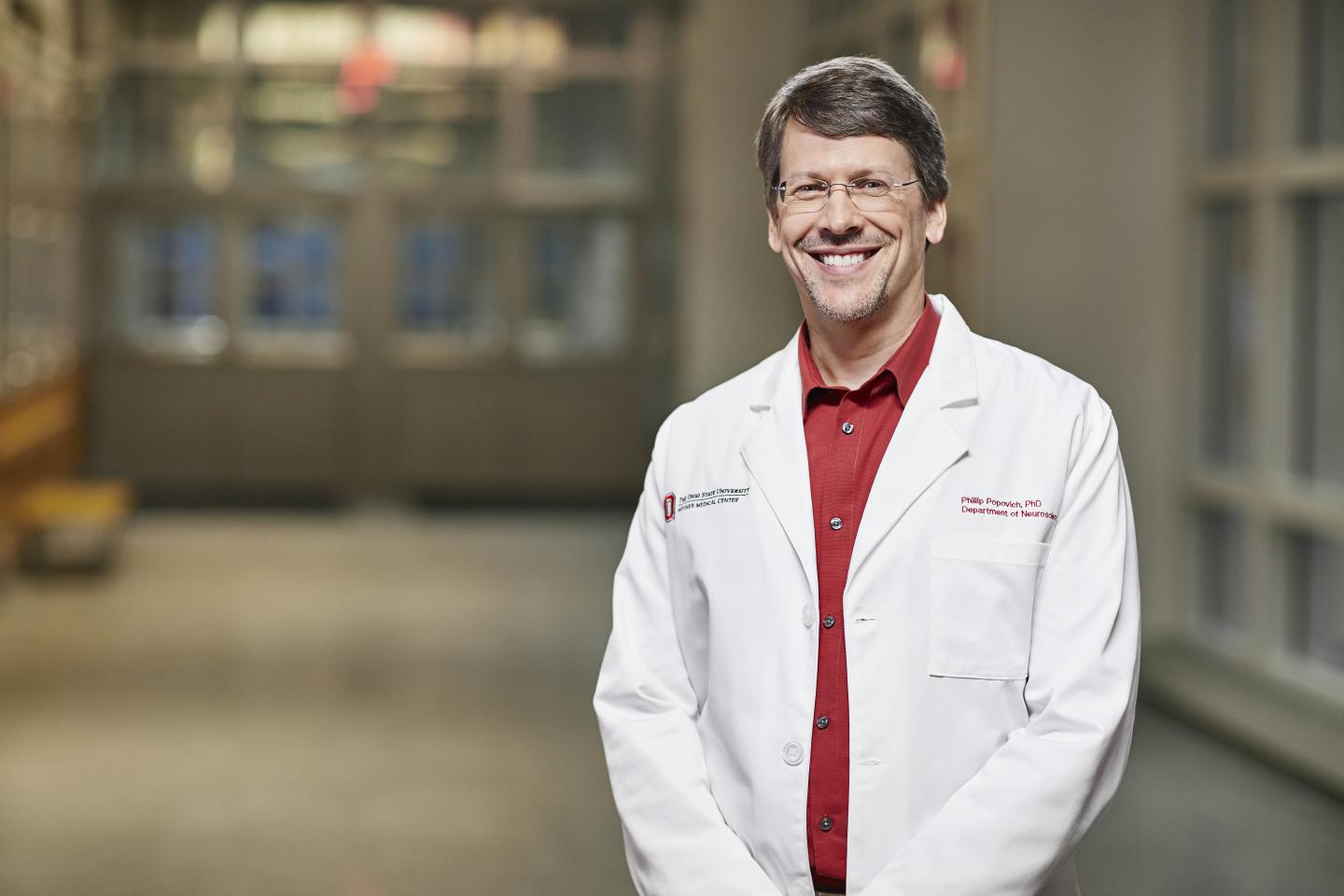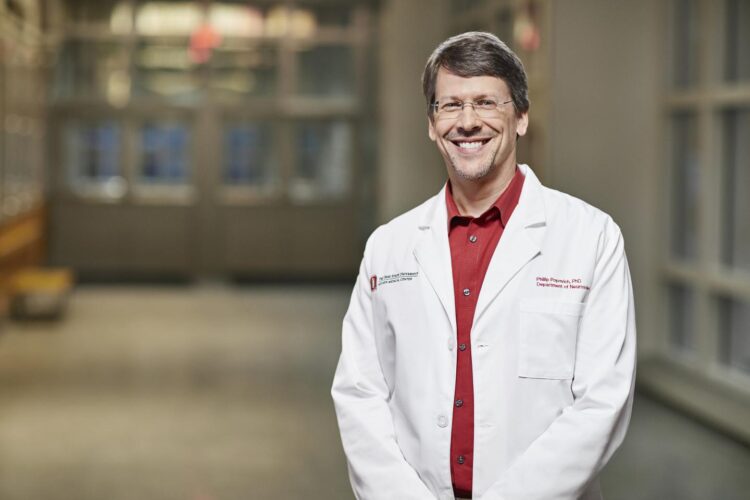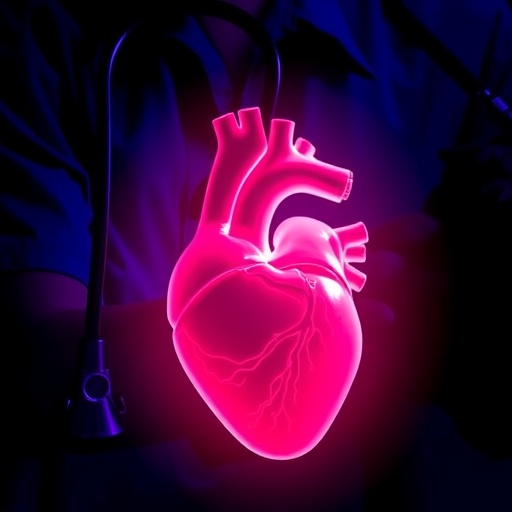
Credit: The Ohio State University Wexner Medical Center
COLUMBUS, Ohio – Research conducted at The Ohio State University Wexner Medical Center and The Ohio State University College of Medicine found that spinal cord injuries in mice cause an acquired bone marrow failure syndrome that may contribute to chronic immune dysfunction.
“We also found that it’s possible to overcome certain aspects of spinal cord injury-induced bone marrow failure. This could have an immediate impact on people affected by spinal cord injury,” said lead author Phillip Popovich, chair of the Ohio State Department of Neuroscience and executive director of Ohio State’s Belford Center for Spinal Cord Injury and Center for Brain and Spinal Cord Repair.
Findings are published online in the journal Nature Communications.
Spinal cord injury (SCI) is known to cause immune system dysfunction, which increases the risk of infections. This, in turn, increases hospitalizations and premature death.
Immune cells are made in the bone marrow. Healthy bone marrow requires proper communication with the nervous system, notably the spinal cord.
“Our research shows that spinal cord injury causes stem cells in the bone marrow – those required to make new immune cells – to rapidly divide. But after cell division, these cells become trapped in the bone marrow. We discovered one possible explanation for this,” said Randall S. Carpenter, first author and recently graduated PhD student from Ohio State’s Neuroscience Graduate program.
Notably, in bone marrow of mice with spinal cord injuries, there’s an increase in chemical signaling between stem progenitor cells and support cells in the bone marrow. This enhanced signaling locks the cells down so they can’t move away from the “niches” in which they are born and develop.
This lockdown can be reversed by post-injury injections of the FDA-approved drug Plerixafor, a small molecule inhibitor of CXCR4, a chemokine receptor. Even though Plerixafor frees blood stem cells and mature immune cells from bone marrow, other techniques showed that the intrinsic long-term functional capacity of bone marrow stem/progenitor cells is still impaired for several months post-injury.
Bone marrow failure diseases develop when the bone marrow can’t produce enough healthy mature white and red blood cells. Normal aging and various diseases including diabetes, cancers and chemotherapy also trap mature and immature cells in the bone marrow.
“In spinal cord injury patients, Plerixafor could be a potentially safe and effective way to mobilize cells from the bone marrow niche to help restore immune function. In fact, Plerixafor is already used in other clinical indications to help reverse immunodeficiency in patients; it just hasn’t been used after spinal cord injury,” Popovich said. “While this study was done in mice, these new data help explain observations that have been made in humans with spinal cord injuries,” Popovich said. “More research is needed to understand why the bone marrow failure develops, and whether it’s permanent.”
###
This study also included researchers from The Ohio State University Comprehensive Cancer Center, Ohio State’s Center for Biostatistics and Bioinformatics and Ohio State’s Division of Hematology.
Media Contact
Eileen Scahill
[email protected]





